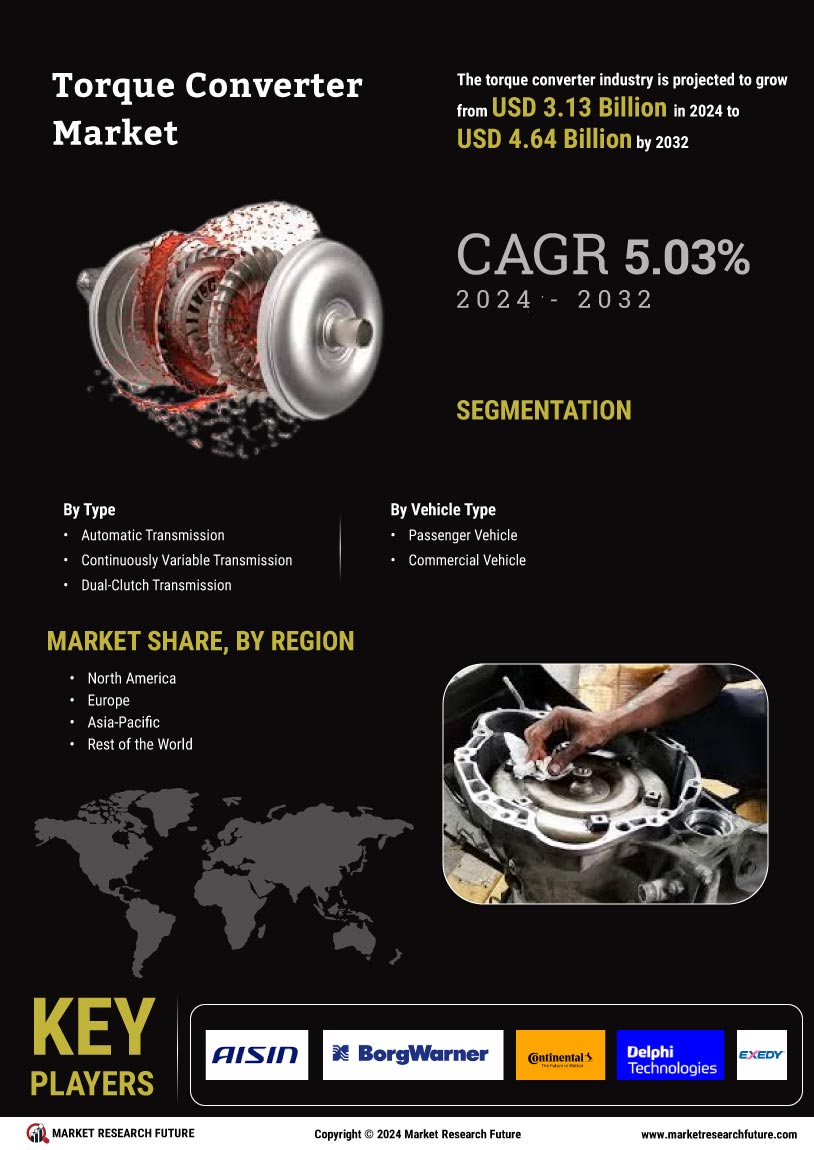The Torque Converter Market is currently characterized by a dynamic competitive landscape, driven by technological advancements and increasing demand for fuel-efficient vehicles. Major players such as General Motors (US), Ford Motor Company (US), and ZF Friedrichshafen AG (DE) are strategically positioning themselves through innovation and partnerships. General Motors (US) has been focusing on enhancing its electric vehicle (EV) lineup, which necessitates advanced torque converter technologies to optimize performance. Meanwhile, Ford Motor Company (US) is investing heavily in research and development to improve the efficiency of its torque converters, aligning with the global shift towards sustainability. ZF Friedrichshafen AG (DE) is also making strides in digital transformation, integrating smart technologies into its products to enhance operational efficiency and customer satisfaction.
In terms of business tactics, companies are increasingly localizing manufacturing to reduce costs and improve supply chain resilience. The Torque Converter Market appears to be moderately fragmented, with a mix of established players and emerging companies vying for market share. The collective influence of key players is shaping a competitive structure that encourages innovation and responsiveness to market demands.
In November 2025, BorgWarner Inc. (US) announced a strategic partnership with a leading EV manufacturer to develop next-generation torque converters specifically designed for electric drivetrains. This collaboration is expected to enhance BorgWarner's position in the growing EV segment, reflecting a broader trend of traditional automotive suppliers adapting to the electrification of vehicles. The partnership underscores the importance of innovation in maintaining competitive advantage in a rapidly evolving market.
In October 2025, Aisin Seiki Co., Ltd. (JP) unveiled a new line of torque converters that utilize advanced materials to reduce weight and improve efficiency. This product launch is significant as it aligns with the industry's push towards lightweight components, which are crucial for enhancing vehicle performance and fuel economy. Aisin's focus on material innovation may provide a competitive edge in attracting environmentally conscious consumers.
In September 2025, Honda Motor Co., Ltd. (JP) expanded its manufacturing capabilities in North America by investing in a new facility dedicated to torque converter production. This move is indicative of Honda's commitment to strengthening its supply chain and meeting the increasing demand for high-performance components in the region. The expansion is likely to enhance Honda's operational efficiency and responsiveness to market needs.
As of December 2025, the Torque Converter Market is witnessing trends such as digitalization, sustainability, and the integration of artificial intelligence (AI) into manufacturing processes. Strategic alliances are becoming increasingly important, as companies seek to leverage each other's strengths to enhance product offerings and market reach. The competitive differentiation is expected to evolve from traditional price-based competition towards a focus on innovation, technology, and supply chain reliability, reflecting the industry's adaptation to contemporary challenges and consumer expectations.

















Leave a Comment